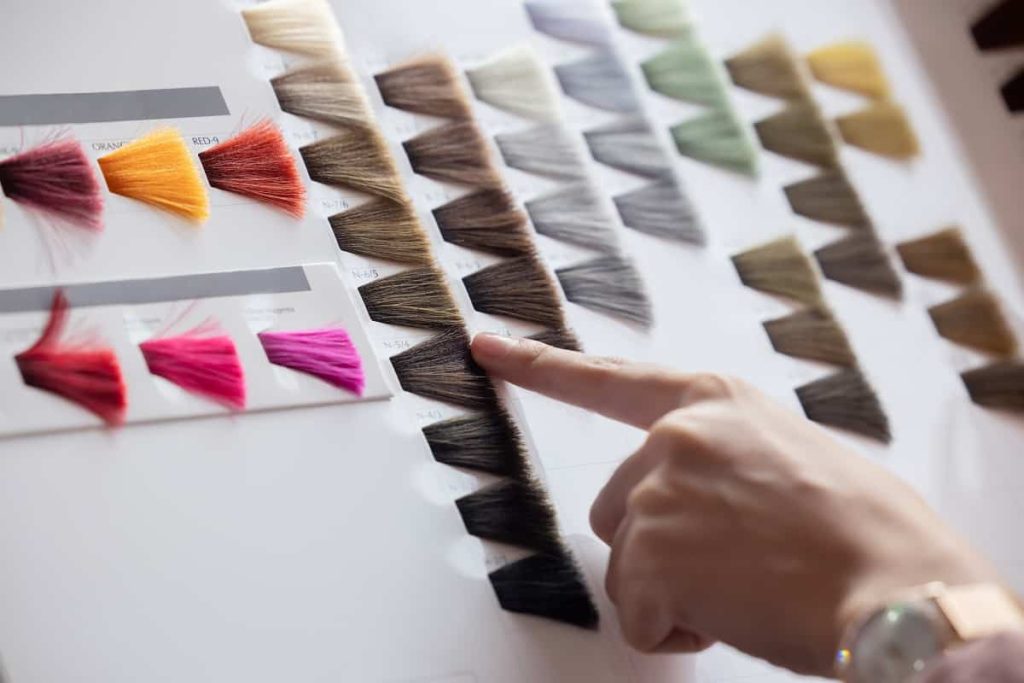Introduction Dyeing Hair
How To Dye Hair can be an exciting way to change your look and express your personality. Whether you’re going for a bold new color or just a subtle change, following the right tips can make the process smoother and ensure your results are vibrant and long-lasting. Here are 15 expert tips to guide you through the hair dyeing process, from preparation to maintenance.
Show 15 Types Dye Hair
1. Choose the Right Hair Dye
Selecting the right hair dye is crucial.

Permanent dyes offer long-lasting results, while semi-permanent dyes are less damaging and fade over time. For first-time dyeing, consider starting with semi-permanent dyes to see how you like the color.
Example: If you’re aiming for a deep red, choose a high-quality permanent dye for the most intense and long-lasting color.
2. Perform a Patch Test
Before applying any dye, perform a patch test to check for allergic reactions.

Apply a small amount of dye to a patch of skin and wait 48 hours to see if any irritation occurs. This step can prevent unexpected allergic reactions.
Example: Apply a small amount of dye behind your ear and monitor for any redness or itching.
3. Choose the Right Shade for Your Skin Tone
Selecting a hair color that complements your skin tone enhances your overall look.

Cool tones like ash blondes suit fair skin, while warm tones like golden browns work well for medium to dark skin.
Example: If you have a warm skin tone, a caramel blonde might be a flattering choice.
4. Prepare Your Hair Properly
Ensure your hair is in good condition before dyeing.

Avoid washing your hair immediately before dyeing as natural oils help protect your scalp. Instead, wash your hair 1-2 days before application.
Example: If you typically wash your hair daily, skip a wash the day before dyeing to retain natural oils.
5. Use the Right Tools
Invest in quality tools such as a dye brush, mixing bowl, and gloves.

These tools help apply the dye evenly and protect your hands from staining.
Example: A tint brush with angled bristles ensures precise application, especially for highlighting.
6. Follow the Instructions Carefully
Different dyes have varying application and processing times.

Always follow the instructions on the dye box to achieve the best results. Deviating from the recommended time can affect the color outcome. More Read Content :Verbal Abuse And Law
Example: If the instructions state to leave the dye on for 30 minutes, set a timer and avoid exceeding this time.
7. Protect Your Skin and Clothes
Dyeing hair can be messy.

Wear old clothing and use a cape or towel to protect your shoulders. Apply a thin layer of petroleum jelly around your hairline to prevent staining your skin.
Example: Apply Vaseline to your ears and neck to catch any drips and avoid staining your skin.
8. Apply Dye Evenly
To avoid uneven coloring, section your hair and apply dye from roots to ends. Ensure every strand is coated evenly for consistent color.

Example: Divide your hair into four sections and work through each, starting from the roots and moving to the tips.
9. Monitor the Processing Time
Check your hair periodically during the dyeing process

to ensure it’s developing as expected. Use a timer to avoid over-processing, which can lead to damage or unwanted color.
Example: If you’re dyeing your hair blonde, monitor every 10 minutes to ensure the color is lightening properly.
10. Rinse Thoroughly
After the processing time, rinse your hair with cool water until the water runs clear. Avoid hot water as it can strip color and cause fading.

Example: Rinse your hair under a gentle stream of cool water to remove excess dye and lock in color.
11. Use Color-Safe Shampoo and Conditioner
Post-dyeing, use shampoos and conditioners formulated for color-treated hair. These products help preserve color and keep your hair healthy.

Example: Look for products labeled as sulfate-free to prevent stripping your hair of its new color.
12. Avoid Heat Styling Immediately
After dyeing, avoid using heat-styling tools like blow dryers or straighteners for at least 48 hours. Heat can affect the dye and lead to premature fading.

Example: If you need to style your hair, opt for air-drying and avoid using curling irons or flat irons.
13. Protect Your Hair from Sun Exposure
Sun exposure can cause the color to fade faster.

Protect your hair by wearing hats or using UV-protectant hair products when spending time outdoors.
Example: Apply a leave-in conditioner with UV protection before heading out in the sun.Most Related Artical:(Summer Nails For 2024,2025)
14. Regularly Deep Condition Your Hair
Color-treated hair needs extra moisture.

Incorporate deep conditioning treatments into your routine to maintain hydration and prevent damage.
Example: Use a hydrating hair mask once a week to keep your hair soft and shiny.
15. Schedule Regular Touch-Ups
To maintain vibrant color, schedule touch-ups as needed. Depending on your hair growth and color choice, you may need to dye your roots every 4-6 weeks.

Example: If you have a dark brown base and light blonde highlights, plan to touch up your roots every 4-6 weeks to keep the color consistent.
Conclusion
Dyeing your hair can be a fun and transformative experience when done correctly. By following these 15 tips, you can ensure a successful dye job and maintain beautiful, vibrant hair. From choosing the right dye to regular touch-ups and proper care, these steps will help you achieve the best results and enjoy your new look for longer.



